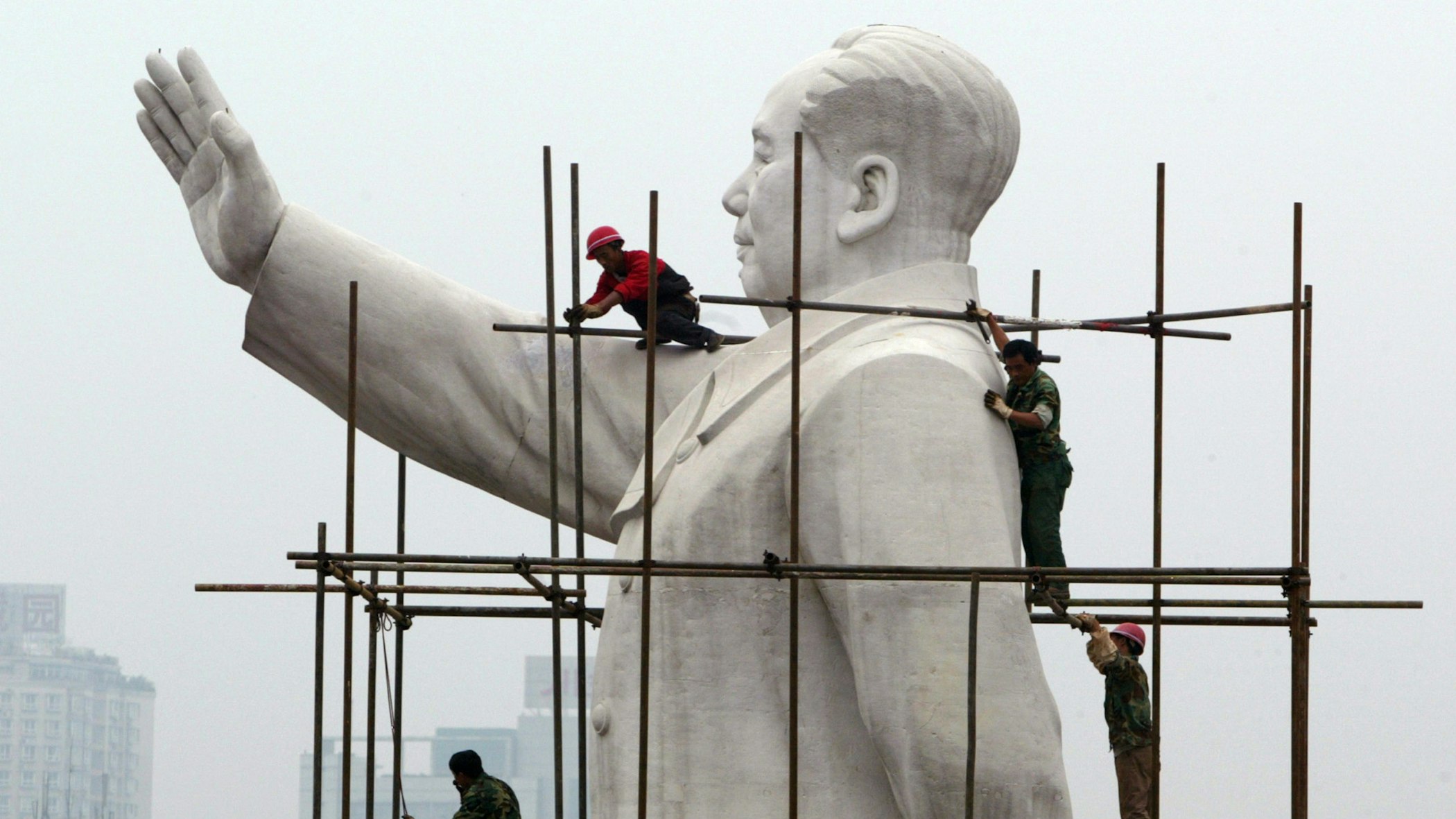SINGAPORE — When professors at China’s famed Peking University invited me to give a lecture on grand strategy, it was a chance not only to compare Chinese and American visions of their place in the world but perhaps even to reconcile them.
A number of Chinese scholars have recently introduced novel vocabulary into geopolitical discourse, such as the pursuit of “symmetry” instead of hierarchy and understanding “relationality” as the context of great power dynamics. These interventions have important normative value. They suggest that rather than fear China as a hegemon seeking singular global dominance, East and West can coexist in harmonious equanimity, like two dancers holding hands so both stay standing. But, much like the more famous Chinese phrase “peaceful rise,” they also have political value — as code for speaking softly while building a stronger stick.
What America has experienced in the past three decades is now happening to China: Counterreactions to China’s aggression have cemented coalitions among states permanently suspicious of it, and the demand for Chinese leadership is declining even as its power grows. Both America and China thus need to grasp that complex feedback loops are the turbulent new playing field of competition, with more actors operating in parallel and around each of them — and faster than in previous eras of great power rivalry. We have entered, for the first time in history, a truly global diplomatic marketplace.
The reason American grand strategy has become such an anodyne exercise is that it still holds the United States to be the central decisive sun around which all other planets revolve. Only a process utterly bereft of geographical, cultural or contextual nuance could produce static charts comparing America and China’s “gross national power.” Each time I see one, I reach for my revolver.
“Both America and China need to grasp that complex feedback loops are the turbulent new playing field of competition.”
Not surprisingly, the post-Cold War articulations of American grand strategy have all failed by their own account, whether regarding preventing the rise of a peer competitor, promoting democracy, championing global free trade or leading a liberal international order. Even those areas where America can still claim dominance — financial muscle and digital technology — are becoming highly competitive arenas. (Energy, both hydrocarbon and renewable, is ubiquitous.)
China scores points for strategic creativity, but it too has been blinded by hubris. Fully aware of America’s preponderant military assets, China focused on branding infrastructure as a global public good, a win-win formula to modernize dilapidated postcolonial and post-Soviet nations while also engineering its way out of the so-called “Malacca trap” — dependency on imports and exports flowing through the narrow Strait of Malacca. But China’s far-flung supply chains were also too important to passively let its clients elect good leaders, hence white-elephant projects and debt traps became a preferred neocolonial tool.
Which brings us to the present: No country trusts either America or China, and neither power can subdue the other. Military victory can only be limited in scope given universal deterrence. Financial liquidity is infinite, thus bankrupting the other won’t work either. Are Americans and Chinese the only ones who don’t understand that hegemony is not the pathway to fulfilling either their own or the world’s needs?
For a grand strategy in the 21st century to be worth the paper it’s written on, it needs to incorporate an element of global strategy: What is a power’s contribution to global goods and maintaining a baseline of civilizational stability?
“Are Americans and Chinese the only ones who don’t understand that hegemony is not the pathway to fulfilling either their own or the world’s needs?”
America’s protection of open sea lanes, China’s financing of infrastructure and Europe’s promotion of environmental regulation are all examples of contributing to the global good, but they fall well short of a “G3” coordinated global strategy on the scale the world needs today. Having distinct American, Chinese and European strategic cultures is not enough when we need a global strategic culture as well.
Grand strategy seeks dominance; global strategy seeks equilibrium. Without a common strategic culture, global governance is a farce, and challenges large and small fall through the cracks — only to bite us later on. Colonial-era border disputes flare up and escalate into war, and failed states become humanitarian crises. Proactive dispute settlement and postwar reconstruction are just two legacy agendas that have been poorly managed and thus portend future trouble.
Far more existential challenges loom for which global strategy is a sine qua non. Confronting climate change will require much more than gradual emissions reductions. Which powers will form the essential coalition to finance, research and launch oceanic and atmospheric geoengineering initiatives to absorb carbon and reverse global warming? Who will develop and distribute vaccines for both humans and animals to decrease the likelihood of future pandemics that ravage our population and food supply? This is the time for what Noema editor-in-chief Nathan Gardels calls “planetary realism,” meaning cooperation in areas of common civilizational interest.
“Grand strategy seeks dominance; global strategy seeks equilibrium.”
There is nothing soft or subordinate about these objectives to the Olympian aspirations of grand strategy. History is the story of empires lacking the foresight to avoid reaping what they sow, from anti-colonial nationalism to terrorist “blowback.” For example, America’s limp climate policy, combined with a miserly approach to Latin America, will eventually spur massive waves of climate refugees. And China’s relentless damming and diversion of the Mekong and Brahmaputra River headwaters may bring mass migrations from Southeast Asia northward.
Both America and China have the attitude that what is good for them is good for the world. But in fact, that is true only in reverse. Unrestrained protectionism and industrial policy hamper growth in the same markets America and China want to boost exports into. The synchronized global recovery in growth and trade brought about through coordinated action after the global financial crisis is impossible in today’s beggar-thy-neighbor world.
In a geopolitical marketplace, great powers can keep each other honest, leading global strategic competition to look more like a race to the top than the bottom. Europe and America can offer lower lending rates for infrastructure than China; China can export affordable solar and nuclear power more rapidly than Western economies; and India can offer digital governance solutions to countries without stealing their citizens’ data. And nations too smart to pick sides will “multi-align” among various suitors to get the best deal for themselves.
Grand strategists in all nations must reckon with today’s globally distributed multipolarity and dynamic ties among all regions and powers. It is not a temporary condition but our abiding reality. This, not the inert game of Risk, is the complex geopolitical foundation of the decades ahead. America may purport to be the “leader of the free world,” while China espouses a “community of common destiny.” But neither has a global strategy to match.






